Categories
Subjects
Authors
Artists
Venues
Locations
Calendar
Filter
Done
October 20, 2016 – Review
FIAC and Paris Internationale
Sabrina Tarasoff

Adam Curtis’s new film HyperNormalisation (2016) is about the diffusion of power through the manipulation of the media. It posits that politicians adopted the basic tenets of techno-utopianism to create an oversimplified worldview of a global economic and political landscape which had become overwhelmingly complex. The creation of mass-mediated, caricatured villains, alongside the triumph of algorithms that create an echo chamber of opinion, reify the sense of felt anxiety and support new forms of power. Participation reinforces these structures, maintaining the fantasy of status quo in society even as we feel assaulted by the unpredictable.
Art fairs seem to operate in similar ways, spreading states of disconcert and powerlessness which reify comparable anxieties about the demands of the market whilst providing the grounds on which to idly fantasize about structures which could undercut the existing order. While the critique of fairs—writers pointing fingers at excesses, entanglements, or trends—only exacerbates the problem, we all fall into the trap of assuming that power lies in some displaced “other,” ignoring how our collusion enables the structures we seek to oppose. Display, discourse, commerce, and criticism all consolidate the fair’s encompassing power by refusing to acknowledge how normalized its ebbs and flows have become.
Alternatives do …
October 23, 2014 – Review
FIAC
Sabrina Tarasoff
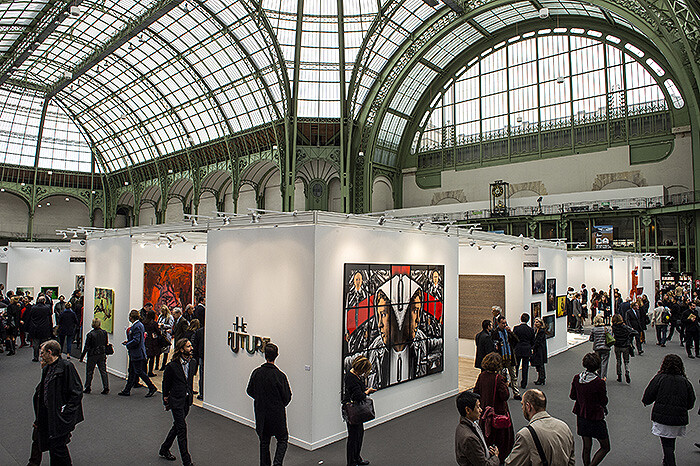
“Is there sexual innuendo in the artworld?” Cady Noland, in response to this question posed by John Waters and Bruce Hainley in Art: A Sex Book (2003), answered with a very prompt: “Yes. ‘Euphemisms.’” According to the infamous artworld absentee, artists and dealers are screwed, and often engaged in “one night stands”: money, artworks, and documentation are tenderly “held onto” by galleries; practices are promiscuous, and, as Noland states, “artists can have ‘performance anxiety’, because art, like sex, can be on demand.” Within the context of a fair, where artworks are arguably in their highest public demand—at least in an economic sense—“performance anxiety” of any kind seems resolutely forbidden. Due to its emphasis on peformativity, the conditions created for the display of art are precisely attuned to the sexuality incited by the market—or more specifically, by consumerism—conflating not only symbolic and capital value in the works themselves, but ensuring the total collapse between financial affairs and personal relationships. What is enacted, by the system and those who participate alike, is a fetishism directed towards artworld professionals and their interactions, rather than towards the works: a promiscuous knowledge exchange encouraged by the increasing amount of discursive platforms integrated into the fair …
October 24, 2013 – Review
FIAC
Mara Hoberman
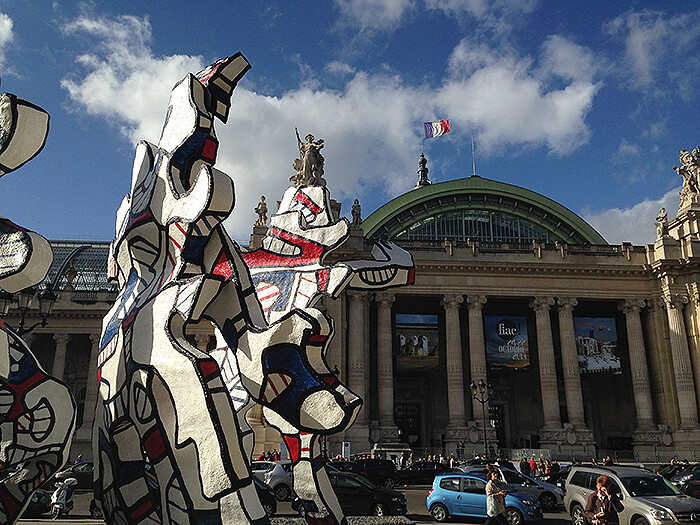
Turning forty is tough. But FIAC is celebrating this milestone in characteristic Parisian style with a slightly more international roster of galleries on view in the Grand Palais (with first-timers from Canada, Ireland, and the Czech Republic). And with an expanded and notably strong “Hors les Murs” (Outside the Walls) program this year, the metaphorical birthday party is reaching a wider public audience and taking over more Paris real estate than ever before. Indeed part of what makes this year’s fair particularly strong is the synergy between what’s for sale inside the fair booths and what’s on view elsewhere in the Parisian art scene.
Beyond representing nearly 30% of the booths at FIAC, local galleries—surely anticipating a rush of international visitors—tend to plan their best shows for October (Omer Fast at gb agency, Abraham Cruzvillegas at Galerie Chantal Crousel, Aaron Curry at Almine Rech Gallery). In addition, the fair’s sprawling “Hors les Murs” spotlights the city’s cultural institutions, public gardens, and historic monuments. This fall, these satellite presentations range from a large Jean Dubuffet sculpture, Welcome Parade (2008 [based on a maquette from 1974]), installed in front of the Petit Palais, to the first-ever Parisian showcase of the entrepreneur François Pinault’s …
October 18, 2012 – Review
FIAC
Mara Hoberman
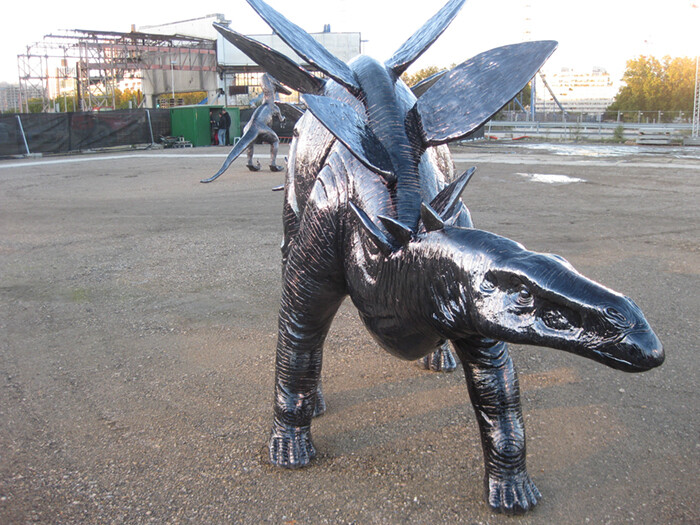
It’s hard to pinpoint the moment that FIAC actually started. Extramural events—gallery unveilings, private museum tours, an “immaterial” auction, a magazine launch, a performance on a bateau mouche, and lots and lots of parties—began in earnest on Monday, just one day after Frieze ended, two days before FIAC’s “guest of honor” and press previews, and three full days before the fair’s official opening on Thursday. With so much build up—72 hours of hype fueled by generous amounts of champagne and finger foods—I worried the fair itself would be a letdown.
Early in the week proved a good time to take in the public art on view in Paris and visit a few new venues just outside the city center. Monday evening there was a chic booze-cruise along the Seine to Ile Seguin, a 29-acre island west of Paris. Once home to a Renault factory and pretty much abandoned since the auto plant closed in 1992, a major redevelopment promising exhibition spaces and artists’ studios is underway. R4, the Jean Nouvel-designed arts center, is not scheduled to open until 2015, but in the meantime the project has partnered with FIAC to exhibit outdoor sculpture. As we debarked onto the yet-to-be-gentrified grass-and-gravel atoll, …
October 24, 2011 – Review
FIAC!
Caroline Soyez-Petithomme
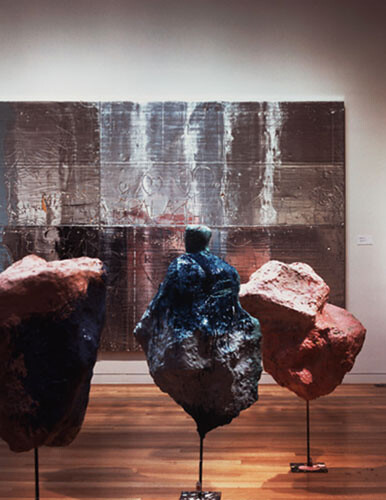
Following the opening of FIAC on Wednesday, positive feedback confirmed a strong start. Perhaps a little dazed after the opening, a few dealers–such as Isabelle Alfonsi, co-founder of Marcelle Alix with Cécilia Becanovic–scattered to deal with collectors and other VIPs scanning everything in the booths. Marcelle Alix took part in the easy-to-miss galleries on the upper floor, a space they shared with the Lafayette section. For the third year, the Groupe Galeries Lafayette sponsored ten emerging galleries at FIAC. As noted by Laurence Périllat, head of Groupe Galeries Lafayette’s corporate patronage department and also in charge of developing the private arts foundation project due to open in Paris in 2014, the prize was awarded to a female artist for the third year running, a point the company is proud of, particularly when considered alongside the Prix Marcel Duchamp which nominated only male artists this year. Lafayette’s awarded project is then purchased by the collection of the Groupe Galeries Lafayette. Helen Marten (b.1985), represented by Johann König won the prize this year and will realize a solo exhibition in October 2012 at the Palais de Tokyo.
The Parisian artistic landscape is growing up and has become more diversified, particularly via the creation …
October 25, 2010 – Review
FIAC – International Contemporary Art Fair, Paris
Adam Kleinman
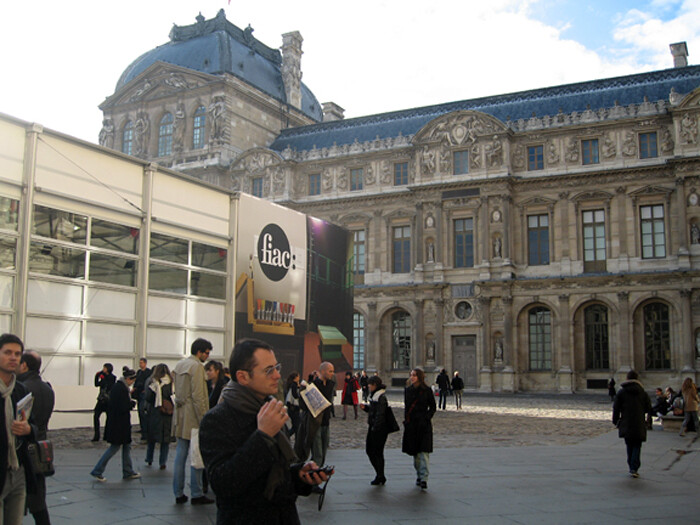
Der Kehlkopfverschlußlaut singt.
—Paul Celan
Considering the stigmas of alcohol and its abuses, advertising such products can be tricky. Cleverly, Ricard hit upon an idea: sponsor an eponymous prize at an art fair, throw a party for the winner, and then partner with the Pompidou to donate a work to the collection as the reward. With each step, the sponsor advertizes obliquely as the “class” of high art adds cachet to a cheap drink. An art fair, by definition, is a private affair, a purely commercial enterprise. However, what is curious today is that art fairs have also become expanded economic engines outside of the “art world” through their great elasticity for partnerships.
Ricard is not the only sponsor in on this game: planes, Air France; VIP chauffeured cars, Audi; lodging, Hotel Adagio; public art, the Tuileries Garden and the government. Even though the latter is a public-private partnership, there isn’t much to get upset about. This “show,” where galleries put out their crowd pleasers is just that—crowd pleasing. Capitalizing on this mass demographic, many major art institutions set their calendar for a knock-out show—just in case a few collectors and the like are in town—like, for example, the Adam McEwen curated exhibition …